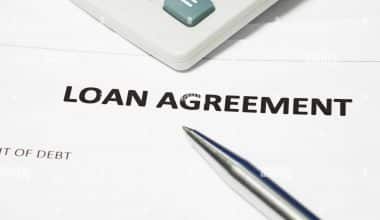The goal of lenders is to minimize risk. That is why larger loans have more strict qualification requirements and only the most dependable borrowers obtain the best interest rates. However, some lenders may go even further to reduce risk by issuing what is known as recourse loans. In this guide, we will explain in full detail what a recourse loan is, how it works, and a clear difference between recourse loans vs. non-recourse loans that lenders offer. Let’s get to it.
What Is a Recourse Loan?
With full recourse loans, the borrower is individually accountable for the entire loan amount. As a result, the lender may first repossess or foreclose on the loan collateral as indicated in the loan agreement. If the lender is unable to retrieve the whole loan total by selling the collateral, it might get a deficiency judgment and pursue the borrower’s other assets. This is true even for assets that were not designated as underlying collateral for the loan, and it might involve garnishing paychecks or levying bank accounts to pay off the outstanding debt.
Credit cards, vehicle loans, and hard money loans—typically short-term real estate loans provided by non-bank lenders—are all examples of recourse loans. In the event of a default, the lender may repossess the vehicle or items purchased with the loan (collateral) and sell them to recuperate the unpaid loan balance. In many circumstances, the collateral has already depreciated or been destroyed, and the lender must obtain a deficiency judgment for the difference in value. The lender can then try to recoup its money by seizing the borrower’s other assets.
Home mortgages are considered recourse loans in all but 12 states. If a borrower is underwater on their mortgage—that is, the existing debt exceeds the value of the home—the bank may not be able to reclaim all of its money from a foreclosure auction. In this situation, the bank can obtain a deficiency judgment for the difference between the debt and the foreclosure selling price, and then garnish the borrower’s earnings or file a lien against other assets.
Even if a lender obtains a judgment against a borrower, collecting on the outstanding debt can be costly and time-consuming. If a lender does not believe the borrower has considerable assets to tap, the lender may never collect on the outstanding loan. However, you should always strive to avoid this consequence by talking with your lender if you suspect you will default.
Types of Recourse Loans
Certain types of funding can be works or can be categorized as a full recourse loan. Hard money loans for real estate acquisitions, for example, would be called recourse loans. The provisions of a hard money loan allow lenders to take possession of the property in the case of default and resell it themselves. Lenders may even agree to give this finance in the hopes of acquiring ownership of the property and reselling it for a higher profit.
An Example of a Recourse Loan
Assume you take out an auto loan to buy a car. If you cease paying payments, the lender has the legal right to repossess the vehicle.
If the vehicle’s value is less than the loan sum, the recourse clause comes in. Assume you took out a car loan and ceased making payments after a year, at which point the lender seized the vehicle. The car is only worth $12,000 at this point, but you still owe $14,000 on the loan.
The lender needs to reclaim $2,000 in order to break even on the loan. If you have a full recourse loan, the lender can then seek a court to garnish your wages until you pay off the $2,000. It may also be able to recoup monies by removing your tax returns, pension checks, Social Security checks, and other benefits.
What Is a Non-Recourse Loan?
In the event of a default, a lender can confiscate the loan collateral. In contrast to a full recourse loan, the lender cannot go after the borrower’s other assets, even if the market value of the collateral is less than the existing debt. Even if lenders’ ability to get a deficiency judgment is limited, non-recourse loans nonetheless create some personal culpability because the lender can confiscate the underlying loan collateral.
Nonetheless, lenders who make non-recourse loans face a higher risk of not recouping the loan balance and interest payments. As a result, most financial institutions do not issue non-recourse loans—but some banks, online lenders, and private lenders will.
Home mortgages, while normally recourse, are non-recourse in 12 states: Alaska, Arizona, California, Connecticut, Idaho, Minnesota, North Carolina, North Dakota, Oregon, Texas, Utah, and Washington. If a homeowner defaults in one of these states, the lender can foreclose on the collateralized home but cannot pursue the borrower’s other assets.
Which Is Better: Recourse vs Non-Recourse Loans?
In contrast, full recourse loans vs non-recourse loans generally do not allow a lender to seek a borrower’s non-collateral assets in the event of a loan default. Regardless of whether a secured loan is recourse vs non-recourse loans, lenders can confiscate the borrower’s collateral in the event of failure.
The major distinction is that with a non-recourse loan, the lender can only seize the specific collateral—even if it is worth less than the outstanding debt. A recourse loan, on the other hand, allows the lender to seize the borrower’s collateralized assets and, if it cannot collect the outstanding loan sum by selling that collateral, to go after the borrower’s other assets.
The ideal loan option is determined by the borrower’s needs, creditworthiness, and confidence in their capacity to make on-time payments.
You’re more likely to acquire a recourse loan if you:
- Have a poor credit history or a high debt-to-income ratio. In addition to cheaper interest rates, recourse loans feature more relaxed loan approval standards. If you have a low credit score or a high debt-to-income ratio—that is, a big amount of your monthly income goes toward debt service—you are more likely to be approved for a full recourse loan.
- Want a lower interest rate? Recourse loans are less riskier for lenders than non-recourse loans since lenders have more leeway in recouping outstanding debt in the event of default. As a result, lenders can offer more competitive interest rates on a recourse loan than on non-recourse loans.
- Are you taking out a car loan or a credit card? Certain types of debt, such as credit cards and auto loans, are generally structured as recourse debt. As a result, borrowers must agree to recourse loan terms if they wish to make use of many traditional lending choices.
Non-recourse loans may be an option if you:
- Can meet more severe approval standards. Borrowers with a high credit score and a low debt-to-income ratio may be able to obtain a non-recourse loan in exceptional circumstances.
- Are willing to pay a higher interest rate. Similarly, a higher interest rate protects lenders who are exposed to riskier non-recourse loans.
- Are you taking out a non-recourse mortgage? If you live in one of the 12 non-recourse states, you will be immediately approved for a non-recourse mortgage.
What Are the Advantages of a Recourse Loan?
Recourse loans provide the following benefits to borrowers:
- Access: What happens if the loan provider acquires additional protection? It might be more ready to provide a CRE recourse loan to a borrower who would not qualify for a non-recourse loan. Due to improved collateralization, recourse loans may also charge lower interest rates and allow for faster closings.
- Term: Recourse loans are often shorter-term debt, such as construction, bridge, acquisition, and mini-perm loans. This may better suit a borrower’s investing strategy, particularly those seeking an interest-only loan.
- Suitability: A borrower with minimal assets may prefer a recourse loan since he is generally impervious to lender attacks. After all, if you rent your sparsely furnished apartment, don’t own a car, and put the majority of your money in a 401(k), you have less to lose by taking out a recourse loan.
Advantages of a Nonrecourse Loan
A non-recourse loan provides the following benefits to borrowers:
- Shielding: By taking on a non-recourse debt, you can protect your assets from lender attacks. However, as stated below, certain undesirable conduct can convert your nonrecourse loan into recourse debt. The solution is simple: avoid harmful behavior.
- Taxes: We’ll go into how debt forgiveness affects your taxes later. As you’ll see, defaulting on a nonrecourse loan may result in a lower tax payment than defaulting on a recourse loan if the property increased in value after you obtained the loan.
How to Determine Your Loan Type
Unless you are overdue in your loan repayments, it makes no difference whether your loan is recourse or non-recourse. However, if you want to discover if your existing house mortgage is a recourse loan or a non-recourse loan, you must first determine whether you live in a recourse state, as indicated above.
If you have another sort of debt, such as an auto loan or a credit card, you can determine your loan type by reading your original loan documentation or contacting your lender directly. If you have a recourse loan and suspect you will default, speak with your lender about ways to avoid default, such as forbearance or loan modification. You should also consult with an attorney or accountant to assess the ramifications of default, repossession, and probable wage garnishment.
What Is the Disadvantage of Recourse Mortgage?
The biggest downside of a recourse loan is that the borrower is personally liable for the debt. This means that if the loan defaults, the lender may seek the borrower’s personal assets or income to reclaim the amount. Borrowers face a huge risk if they are unable to repay the loan.
How Does a Recourse Loan Work?
In general, recourse debt (loan) works by allowing lenders to collect what is owed for the debt even after taking collateral (home, credit cards). Lenders have the authority to garnish salaries or levy accounts in order to collect what is due.
What Is the Difference Between With Recourse and Without Recourse?
Recourse may empower the lender to confiscate not only pledged collateral but also savings accounts and sources of income. In contrast, “without recourse” financing indicates that the lender assumes the risk of nonpayment by the obligor.
What Are Limitations of Recourse?
Recourse debt can be unlimited or limited. Limited recourse debt indicates that a lender can only confiscate so many assets to cover the outstanding obligation.
Which Is Better: Recourse or Non-recourse Factoring?
Because your company is taking on the risk of nonpayment, recourse factoring often results in reduced costs and greater advance rates. This means you’ll get more capital up front and spend less on fees, especially if your customers are loyal and pay on time.
Is a Home Equity Loan a Recourse Loan?
Almost all HELOCs are classified as “recourse loans.”Regardless of the value of their property, the borrower is personally liable for repaying recourse loans in full. If the lender does not reclaim the entire amount of the HELOC through foreclosure, they may sue the borrower for the balance due.
The bottom line
If you already have a recourse loan, your best bet is to pay your bills on time. If you are concerned about defaulting on a recourse loan, you should contact the lender and inquire about your options.
When picking between a recourse loan and a nonrecourse loan, examine the advantages and disadvantages. You may pay more interest on a nonrecourse loan, but if you have a solid job and a low debt-to-income ratio, you may decide to take a modest risk and choose a recourse loan.
Related Articles
- NONRECOURSE DEBT: Meaning, Risks Involved, and Examples
- NON RECOURSE FINANCING: Meaning and How It Works
- WHAT IS FACTORING AND HOW DOES IT WORK IN FINANCE?
- PROJECT FINANCE: Simple Guide to Kick start any Project(+ best picks)
- SMALL BUSINESS FACTORING: The Ultimate Guide for Small Business Owners






